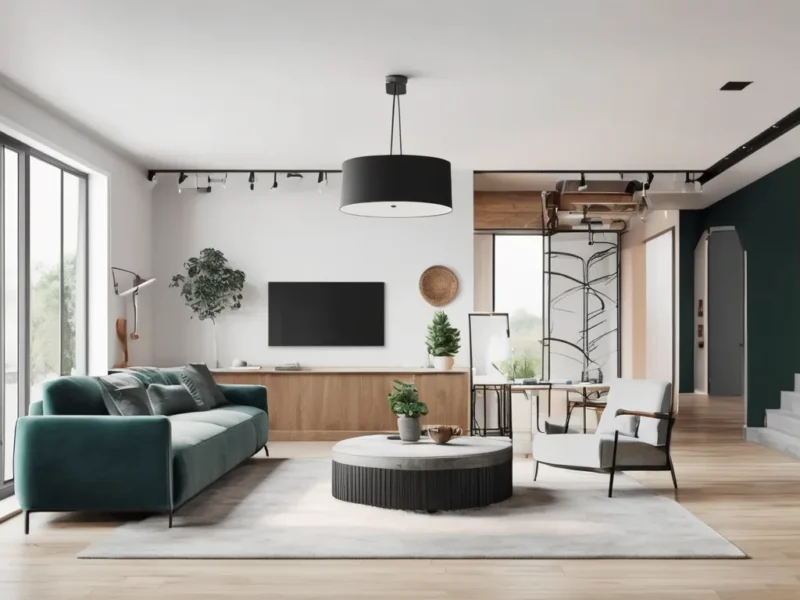Buying a home is a dream for many Americans, but it’s also one of the most significant financial commitments you’ll ever make. While the listing price may be the primary focus, numerous hidden costs can catch first-time buyers off guard. Understanding these expenses and learning how to budget for them is crucial to avoid financial strain.
In this guide, we’ll delve into the hidden costs of buying a home in the U.S. and provide actionable tips for budgeting smartly.
1. Closing Costs
What Are They? Closing costs are fees and expenses associated with finalizing your home purchase. They typically range from 2% to 5% of the home’s purchase price.
What Do They Include?
- Loan Origination Fees: Charged by lenders for processing your loan.
- Appraisal Fees: A professional assessment of the home’s value.
- Title Insurance and Search Fees: Ensure there are no legal issues with the property’s ownership.
- Attorney Fees: For legal representation and review of contracts.
- Escrow Fees: For handling the funds and paperwork during the transaction.
How to Budget:
- Get an estimate from your lender early on.
- Ask sellers to cover part of the closing costs during negotiations.
2. Property Taxes
What Are They? Property taxes are ongoing expenses based on the assessed value of your home and local tax rates.
How Are They Calculated? Rates vary significantly by location. For example, New Jersey has some of the highest property taxes in the U.S., while states like Hawaii and Alabama have lower rates.
How to Budget:
- Research the average property tax rates in the area you’re buying.
- Set aside funds monthly in an escrow account if required by your lender.
3. Homeowners Insurance
What Is It? Homeowners insurance protects your property against damages and liability. The cost varies based on location, property size, and coverage levels.
What to Watch For:
- In areas prone to natural disasters (e.g., hurricanes, earthquakes), additional coverage like flood or earthquake insurance may be required.
How to Budget:
- Shop around for the best rates.
- Bundle insurance policies (e.g., auto and home) to save.
4. Private Mortgage Insurance (PMI)
What Is It? If your down payment is less than 20% of the home’s price, you’ll likely be required to pay PMI. This protects the lender in case you default on the loan.
How Much Does It Cost? PMI typically ranges from 0.3% to 1.5% of the original loan amount annually.
How to Budget:
- Aim for a 20% down payment to avoid PMI.
- Explore loan programs with lower or no PMI requirements.
5. Maintenance and Repairs
What Are They? Unlike renting, homeowners are responsible for all maintenance and repair costs. This can include:
- Plumbing or electrical issues
- Roof repairs
- HVAC system servicing
How to Budget:
- Follow the 1% rule: Set aside at least 1% of your home’s purchase price annually for maintenance.
- Conduct a thorough home inspection before buying to anticipate potential costs.
6. Utilities and Monthly Expenses
What Are They? Owning a home comes with utility costs that may be higher than what you’re used to, such as:
- Electricity
- Water and sewer
- Gas
- Trash collection
How to Budget:
- Request utility history from the seller to estimate monthly costs.
- Consider energy-efficient upgrades to reduce bills over time.
7. Homeowners Association (HOA) Fees
What Are They? If your home is part of a community or condominium, you may have to pay HOA fees. These cover communal amenities and maintenance.
How Much Does It Cost? HOA fees can range from $100 to $1,000 or more per month, depending on the community.
How to Budget:
- Review the HOA’s financial statements and fee structure.
- Factor these fees into your monthly budget to avoid surprises.
8. Moving Costs
What Are They? Moving into your new home involves expenses such as hiring movers, renting a truck, or purchasing packing supplies.
How to Budget:
- Get quotes from multiple moving companies.
- Save money by moving during off-peak seasons or handling the move yourself.
9. Furniture and Appliances
What Are They? New homes often require additional furniture or appliances. For example:
- A washer and dryer
- A refrigerator
- Living room or bedroom furniture
How to Budget:
- Prioritize essential items first.
- Shop during sales or consider gently used options to save.
10. Renovation and Customization Costs
What Are They? You may want to update certain aspects of your home, like painting, flooring, or remodeling the kitchen.
How to Budget:
- Get quotes for planned renovations before purchasing the home.
- Set a realistic renovation budget and stick to it.
11. Unexpected Costs
What Are They? Even with careful planning, unexpected expenses can arise, such as:
- Emergency repairs
- Higher-than-expected utility bills
- Unforeseen legal or administrative fees
How to Budget:
- Maintain an emergency fund with 3-6 months of living expenses.
- Allocate a contingency fund specifically for home-related surprises.
Smart Budgeting Tips
- Understand Your Affordability
- Use a mortgage affordability calculator to estimate how much house you can afford.
- Get Pre-Approved for a Mortgage
- Pre-approval gives you a clear picture of your borrowing power and helps streamline the home-buying process.
- Stick to Your Budget
- Resist the temptation to stretch your budget for a home with features you don’t need.
- Plan for the Long Term
- Consider how long you plan to live in the home and potential future expenses, like renovations or refinancing.
- Work with a Financial Advisor
- A professional can help you create a comprehensive budget tailored to your goals and financial situation.
Conclusion
Buying a home is a significant milestone, but it comes with many hidden costs beyond the purchase price. By understanding these expenses and budgeting smartly, you can confidently navigate the home-buying process without financial stress. Take the time to research, plan, and prepare to turn your dream home into a reality while safeguarding your financial future.


